Does snacking with Jell-O worth the risks?
Quick answer is NO. Perhaps original Jell-O gelatin desserts of nineteen century were made with natural strawberry, raspberry, orange and lemon flavors. Today Jell-O gelatin snacks (of Kraft Foods) both sugar-sweetened and low calorie versions are one of the most outrageous fruity food hoaxes sold in the US and Canada. The snacks which pretend to be made with a variety of fruits are in fact nothing else but artificially flavored, artificially colored and artificially sweetened animal gelatin. Keep in mind that gelatin is the lowest quality protein mix produced by partial acidic hydrolysis of collagen extracted from the skin, boiled crushed horn, hoof and bones, connective tissues, organs and some intestines of animals such as domesticated cattle, chicken, pigs, and horses.
In other words, Jell-O snacks are worst possible protein polluted with worst possible food chemicals. This is especially true for low calorie versions of Jell-O. Despite its wasteful nutritional content, Jell-O snacks are still popular among American families. As of 2008, there were more than 158 products sold under the Jell-O brand name and about 300 million boxes of Jell-O sold in the United States each year. Today Jell-O enjoys support of about 615,000 followers on Facebook. I believe all those people simply are unaware of that Jell-O may slowly undermine their health and lives.
Let’s consider two Jell-O products: low calorie “Strawberry” and low calorie “Cherry” snacks.
The DyeDiet analysis
The ingredient lists are almost identical. “Strawberry” is made of water, gelatin plus 8 chemicals: adipic acid, sodium citrate, citric acid, aspartame, acesulfame potassium, salt, Red 40 and artificial flavor. It takes them only one more added chemical – a nasty artificial color Blue 1 for darker color – to make it look more like having something to do with cherry. That’s all.
<<<Click to try! Based on this tiny difference between the ingredients the Dye Diet Calculator warns about closely high risks (HR) and low nutritional values (NV) for the both “strawberry” and “cherry” Jell-O snacks: HR = 12.33 with NV = 0.06 and HR = 15.67 with NV = 0.05 (see table). Accordingly, the both products are not recommended for humans.
|
Jell-O Strawberry low calorie gelatin snacks
|
Jell-O Cherry low calorie gelatin snacks |
|
Water, gelatin + 8 chemicals |
Water, gelatin + 9 chemicals |
| DyeDiet: HR = 12.33; NV = 0.06 | DyeDiet: HR = 15.67; NV = 0.05 |
| Fooducate: Green B- | Fooducate: Yellow C |
| ShopWell: Yellow 45 | ShopWell: Yellow 44 |
Confusions of Fooducate
Surprisingly, along with three “red” warnings in regard to artificial colors and artificial sweeteners, Fooducate gives Jell-O “strawberry” descent Green B- rating. In the same time, nearly identical Jell-O “cherry” receives an additional “Highly Processed” warning resulting in lower Yellow C rating. Do Fooducate experts seriously believe that Jell-O strawberry is less processed? And yet another Strawberry flavored Jell-O with exactly the same ingredients gets four red warnings and Yellow C+ grade in Fooducate approach. One of the explanations could be that Fooducate misspelled acesulfame potassium ingredient in their Jell-O “strawberry” ingredients (see the picture on the upper left). Anyway, it is too confusing for the application with tens of thousands of followers.
Misconception of ShopWell
From ShopWell viewpoint critical merits of Jell-O snacks are: Low calorie; Low fat; Low saturated fat and Low sodium. What a big surprise that gelatin mixed with a bunch of artificial chemicals is of low fat! Well, to tell the truth, there is zero fat in Jell-O! Nevertheless, for this ridiculous reason both Jell-O “strawberry” and “cherry” chemical concoctions are rated relatively high in ShowWell scale: Yellow 45 – 44 (see the table). This gross misconception leads to myriads of wrongly rated products. As you may expect, potentially poisonous but “low fat” Kool-Aid Soft Drink Mix (another treat from Kraft Foods) is awarded with even higher score of Yellow 58!
Bottom line
Although there are many less risky and much healthier than Jell-O fruit snacks on the market (for instance, Annie’s homegrown organic Bunny Fruit Snacks; Clif Kid ZFruit ropes), best fruit snacks always were and always will be – the real fresh or dried fruits with no artificial anything added. With this regard, however, I must warn you that many dried fruit products contain artificially colored mango and papaya. Stay vigilant, the Dye Diet Calculator is a reliable tool to help you avoiding health-damaging food surrogates that may often sneak unnoticed as such through other food rating systems.
Category: American diet, Dye Diet Calculator, Fruit snacks

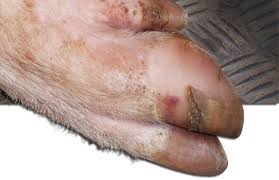
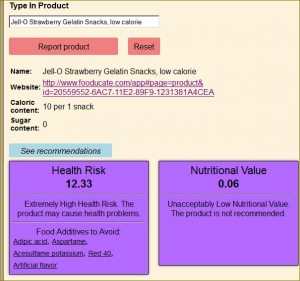
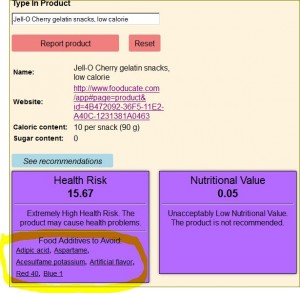
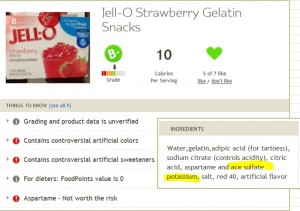
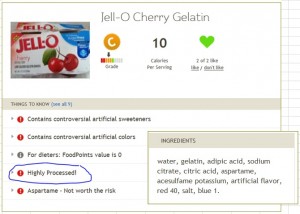




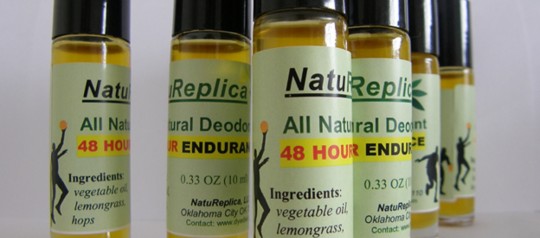
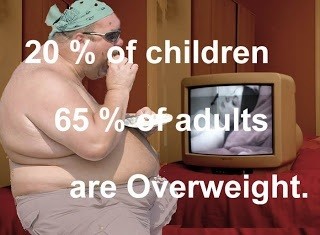
Fooducate labels items as “highly processed” if they have 10 or more ingredients.
Yes, maybe… This is why this criterion is often quite misleading – many products contain long lists of vitamins or other nutrients. Therefore to put red warning simply based on number without any regard to a nature of ingredients is not a scientific approach. From the other hand, a solution of HFCS colored with two artificial colors is made of short list but in no way it is any better than Fooducate’s “highly processed” products. This warning is meaningless.
For a healthier alternative to jello just mix unflavored gelatin with fruit juice and refrigerate for 4 hours. Use real fruit juice.